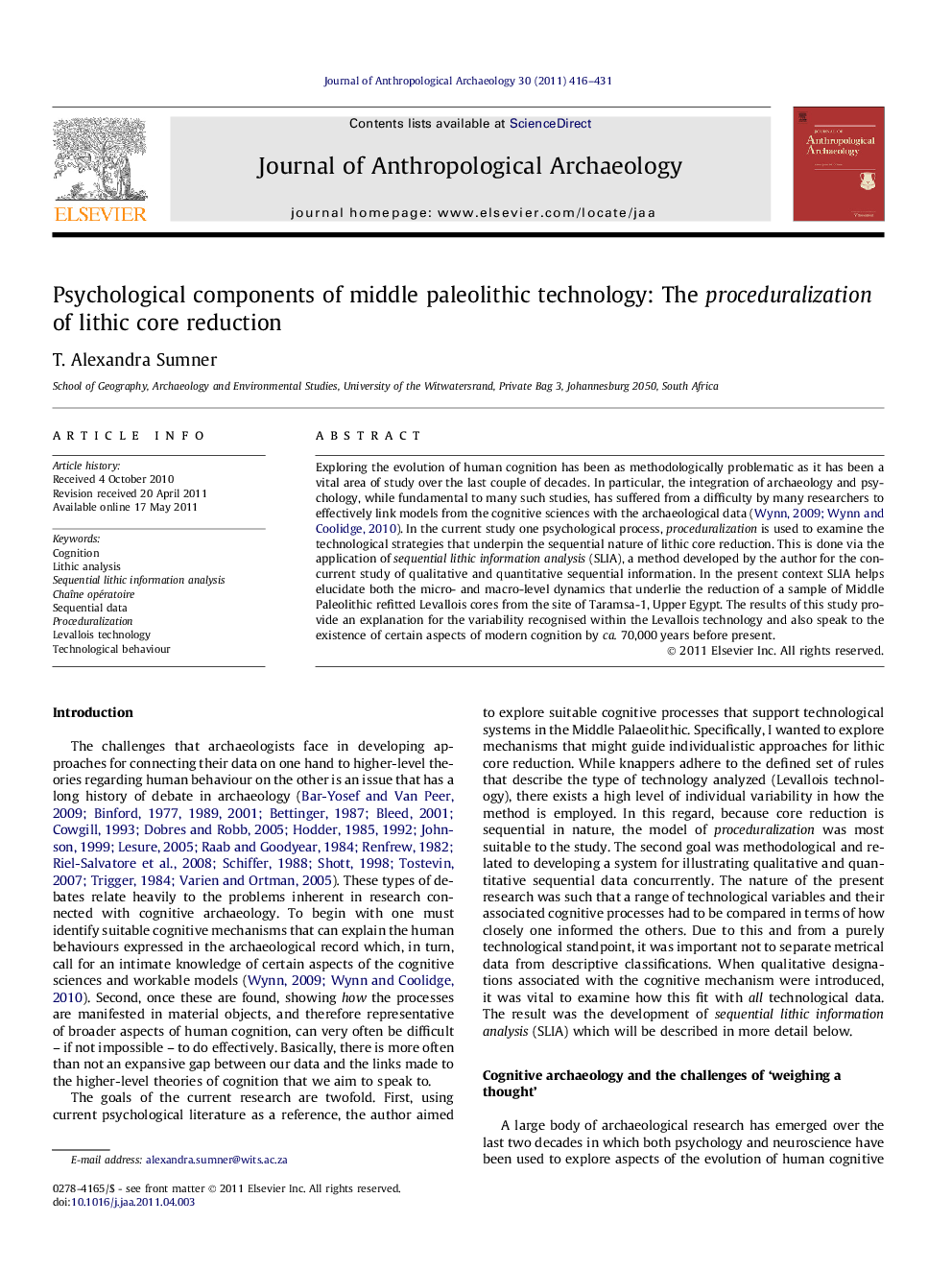| Article ID | Journal | Published Year | Pages | File Type |
|---|---|---|---|---|
| 1035049 | Journal of Anthropological Archaeology | 2011 | 16 Pages |
Exploring the evolution of human cognition has been as methodologically problematic as it has been a vital area of study over the last couple of decades. In particular, the integration of archaeology and psychology, while fundamental to many such studies, has suffered from a difficulty by many researchers to effectively link models from the cognitive sciences with the archaeological data (Wynn, 2009 and Wynn and Coolidge, 2010). In the current study one psychological process, proceduralization is used to examine the technological strategies that underpin the sequential nature of lithic core reduction. This is done via the application of sequential lithic information analysis (SLIA), a method developed by the author for the concurrent study of qualitative and quantitative sequential information. In the present context SLIA helps elucidate both the micro- and macro-level dynamics that underlie the reduction of a sample of Middle Paleolithic refitted Levallois cores from the site of Taramsa-1, Upper Egypt. The results of this study provide an explanation for the variability recognised within the Levallois technology and also speak to the existence of certain aspects of modern cognition by ca. 70,000 years before present.
► Method was developed for exploring qualitative and quantitative lithic data simultaneously. ► Interdisciplinary use of current method is used to make links between data and theory. ► Method helped explore the chaîne opératoire of stone toolmaking. ► Data from refitting research was used to make inferences regarding early human cognition.
